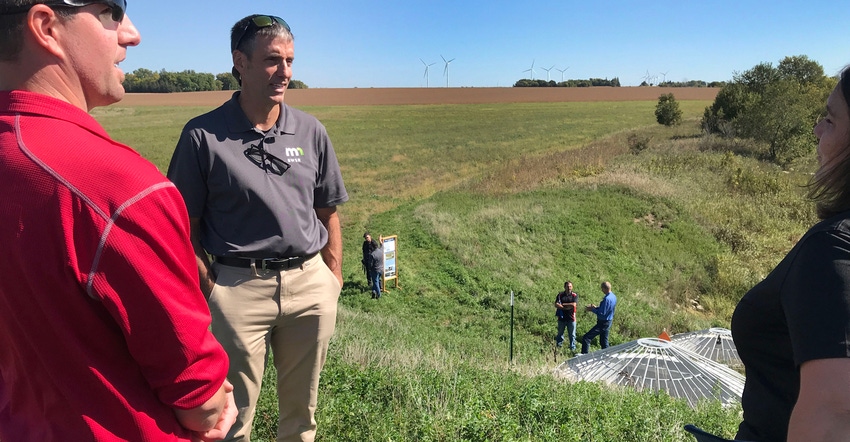February 3, 2022

Minnesota’s climate is already changing, and we’re beginning to see the evidence firsthand. Increasingly heavily rainfalls batter private property and agricultural infrastructure. Recent drought conditions damaged crops and scorched residential lawns for all to see. Skies hazy with smoke from wildfires in Canada and the Western United States diminished the air quality across much of Minnesota last summer.

However, some climate impacts are less visible than a prolonged drought or smoky sky: The increased presence of invasive species and reduced soil resiliency, to name a couple. These impacts are felt across all our natural and working lands — farms, woodlands, wetlands, grasslands and urban open spaces.
We all have a part to play in addressing this critical issue, and Minnesota’s farmers are at the forefront. Certain agricultural practices contribute to greenhouse gas emissions, yet farmers directly suffer the consequences created by increased emissions. However, it’s not too late to make meaningful progress. It’s in everyone’s best interest — especially Minnesota farmers — to implement conservation practices that reduce greenhouse gas emissions and make our landscapes more resilient to climate changes.
Farmers are key players in the process. They are uniquely positioned to address the negative impacts of climate changes on the landscape. Many existing conservation practices already have climate mitigation benefits — we don’t have to reinvent the wheel. We need to continue and increase the best management practices many producers are already incorporating into their operations.
Practices that promote resiliency
The following practices can help make landscapes more resilient to climate changes while also benefiting farmers:
Cover crops and tillage practices. Conservation practices, including cover crops, strip-till and no-till, keep cropland covered and limit the soil disturbance of conventional tillage. These practices can greatly reduce erosion and runoff, increase infiltration and water retention, and boost organic matter in the soil, ultimately improving soil health and productivity.
Water storage. Storing water on the land via retention structures and basins, wetland restorations, and floodplain enhancements helps reduce the speed and quantity of water entering streams and rivers. This reduces erosion and protects farmland and infrastructure downstream. These practices help silt, sand and nutrients settle out gradually, improving water quality.
Tree planting. Trees and shrubs can be powerful allies in combating wind erosion. Planting shelterbelts — also referred to as windbreaks — provides wildlife habitat and captures carbon, in addition to reducing wind erosion.
Perennial crops. Planting perennial crops, including alfalfa and newer alternatives such as Kernza (the trade name for an intermediate wheatgrass) and winter camelina, in drinking water protection areas can protect aquifers from nitrate pollution, promote better infiltration, increase carbon sequestration and reduce nitrous oxide emissions.
Nitrogen application. Paying extra attention to how much nitrogen fertilizer is applied to farm fields can help reduce emissions of nitrous oxide, a greenhouse gas considered far more potent than carbon dioxide.
Minnesota farmers are encouraged to contact their local soil and water conservation district or their crop adviser for more information about implementing climate-friendly conservation practices. Residents across the state are invited to offer ideas for making Minnesota more resistant to climate change on the Our Minnesota Climate website, climate.state.mn.us.
Jaschke is executive director of the Minnesota Board of Soil and Water Resources, a role he has served in for 15 years. He grew up on a dairy farm in Morrison County, Minn.
You May Also Like




